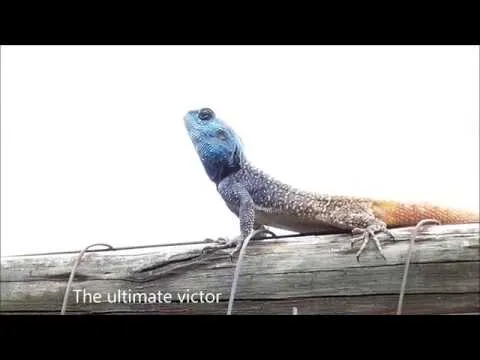Southern Tree Agama, Blue Headed Lizard, Bloukop Koggelmander, Acanthocercus Atricollis
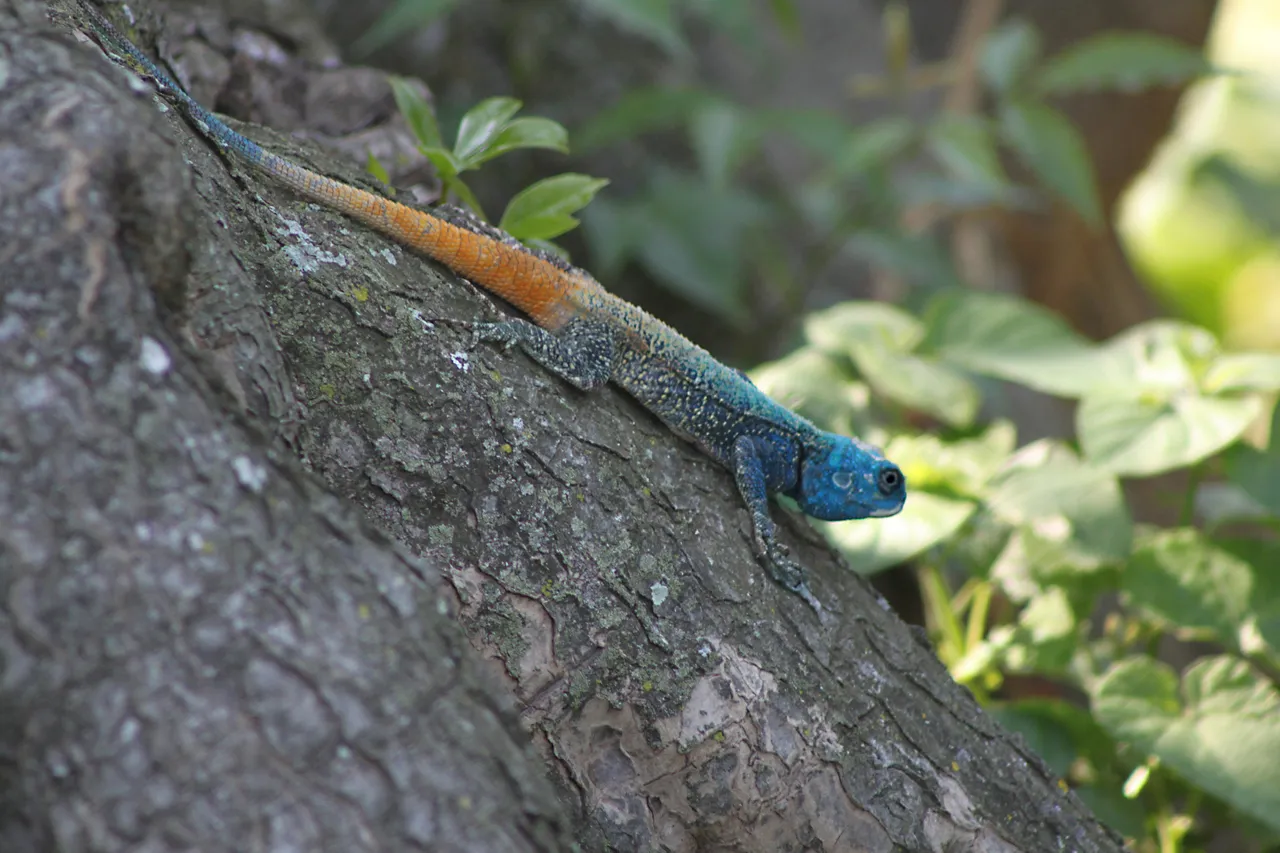
Head bobbing regular visitors in the garden is the Blue Headed Lizard, bigger than skinks running around in broad daylight enjoying the sun, the Bloukop is not poisonous and may become relaxed in a Durban garden when realizing no threat or danger is apparent.
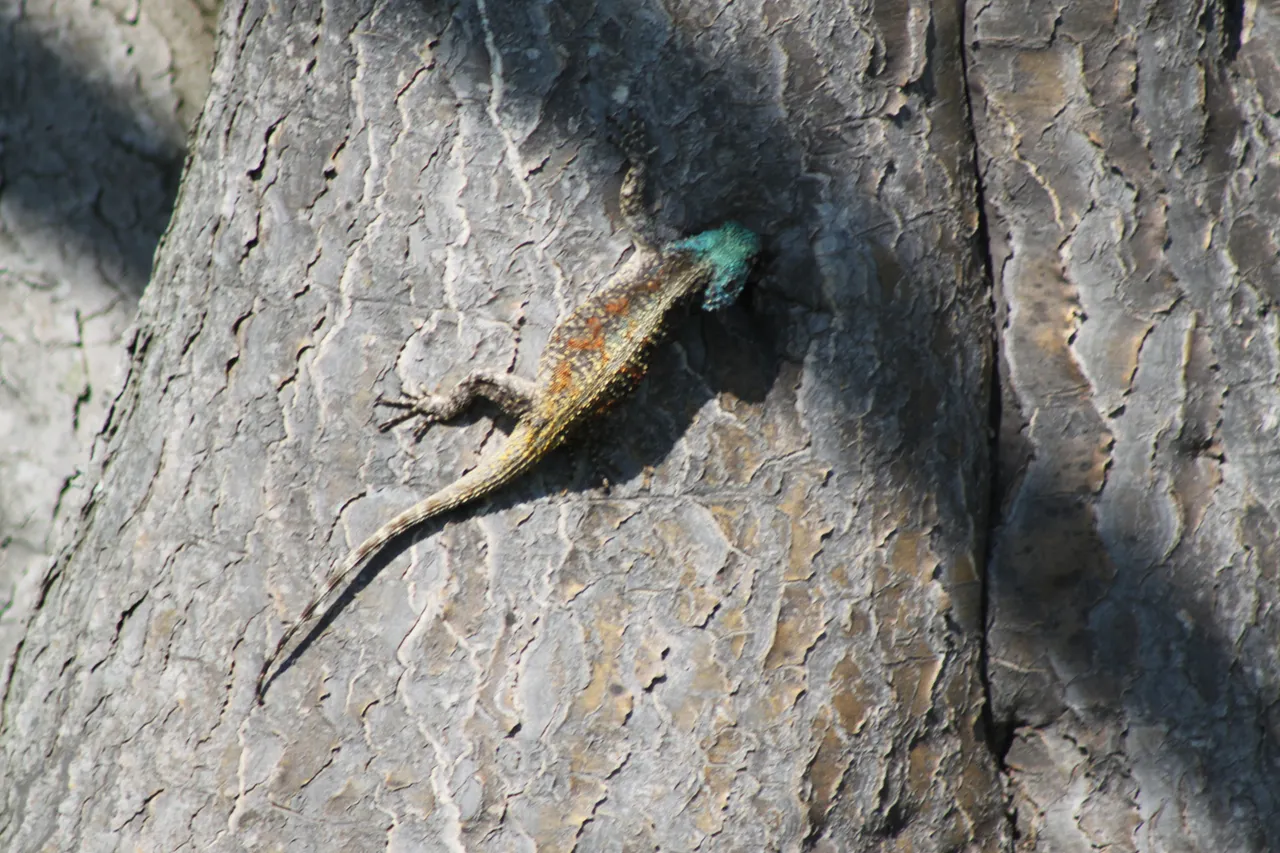
Possessing extremely good sight they will run for the first tree to avoid dangerous encounters, they pick up good speed when on the run.... Should you ever catch one be warned, although they have no venom the could give you a nasty bite defending themselves.
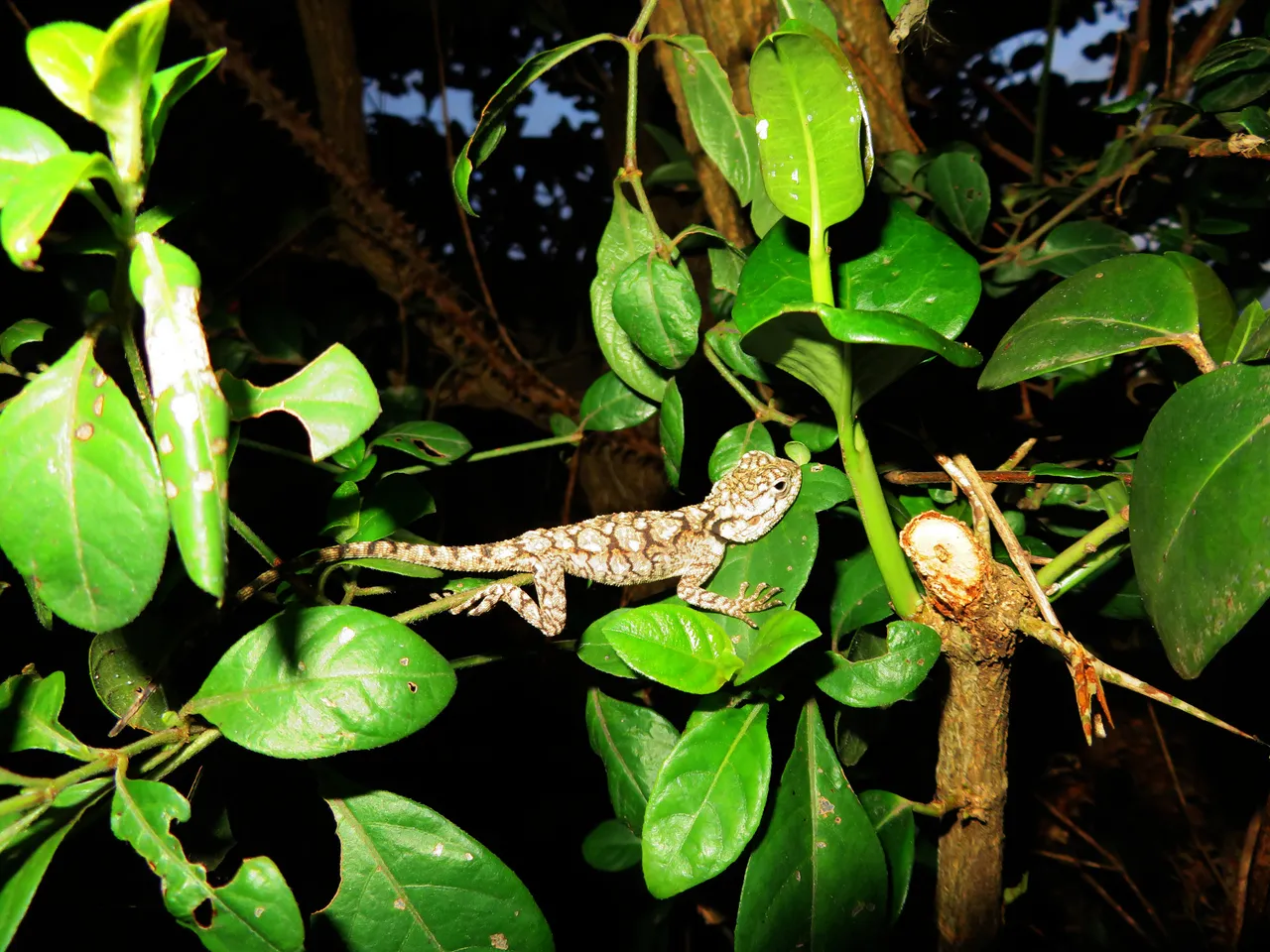
Due to urban population increasing these lizards are not seen regularly, killed by vehicles, habitat destruction, domestic animals everywhere, along with some humans fearing them thus killing them for no good reason! Some humans keep them as pets making trade in lizards another concerning factor, our high population of monkeys stealing eggs laid is most definitely another problem.
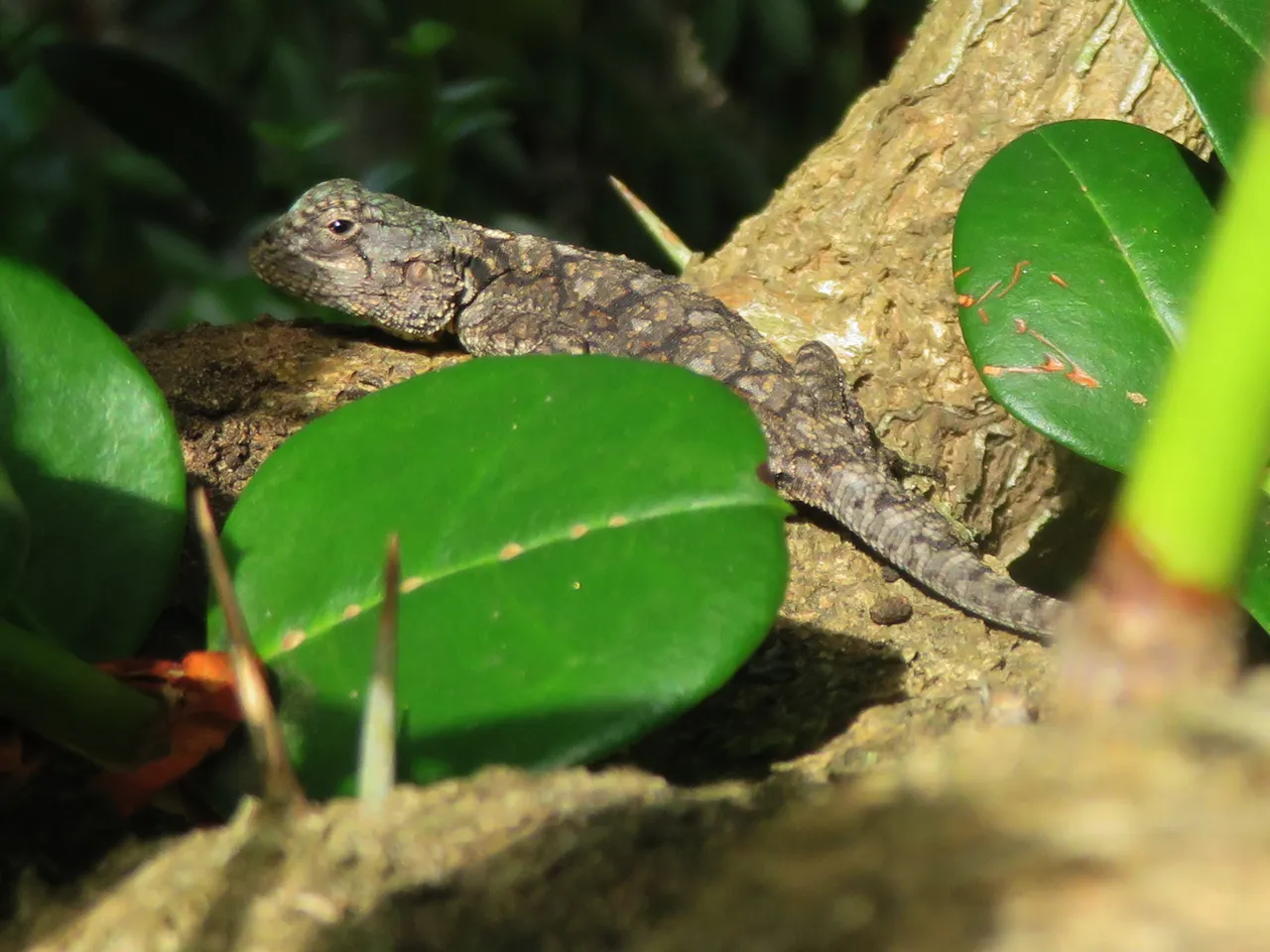
What is interesting is this lizard does eat ants and millipedes making it unique in the lizard world, with sticky mucous glands on the tip of it's tongue, makes for excellent tool for collecting ants, they also tend to leap into the air occasionally for moths, beetles and flies.

Males (like males in most species) will fight for domination over females and territory, these lizards normal do more posturing and sizing each other up before conflict, however conflict does happen, as Carol managed to capture in her backgarden here in Durban. Battle of Rival Tree Agamas
Females blend more into nature, camouflaged similar to the males, without the flashing blue colour to attract females during mating season August to October, he may attract more than one female, older females will lay a greater number of eggs to younger counterpart of 11 on average.

Brightest fittest males win, not only in right colour but also defending territory or he might be out of luck. Earth's mating arena males have learned to use colour to attract love in nature! Females camouflaged for protection blend in quietly watching, choosing the right partner to ensure the species survive.
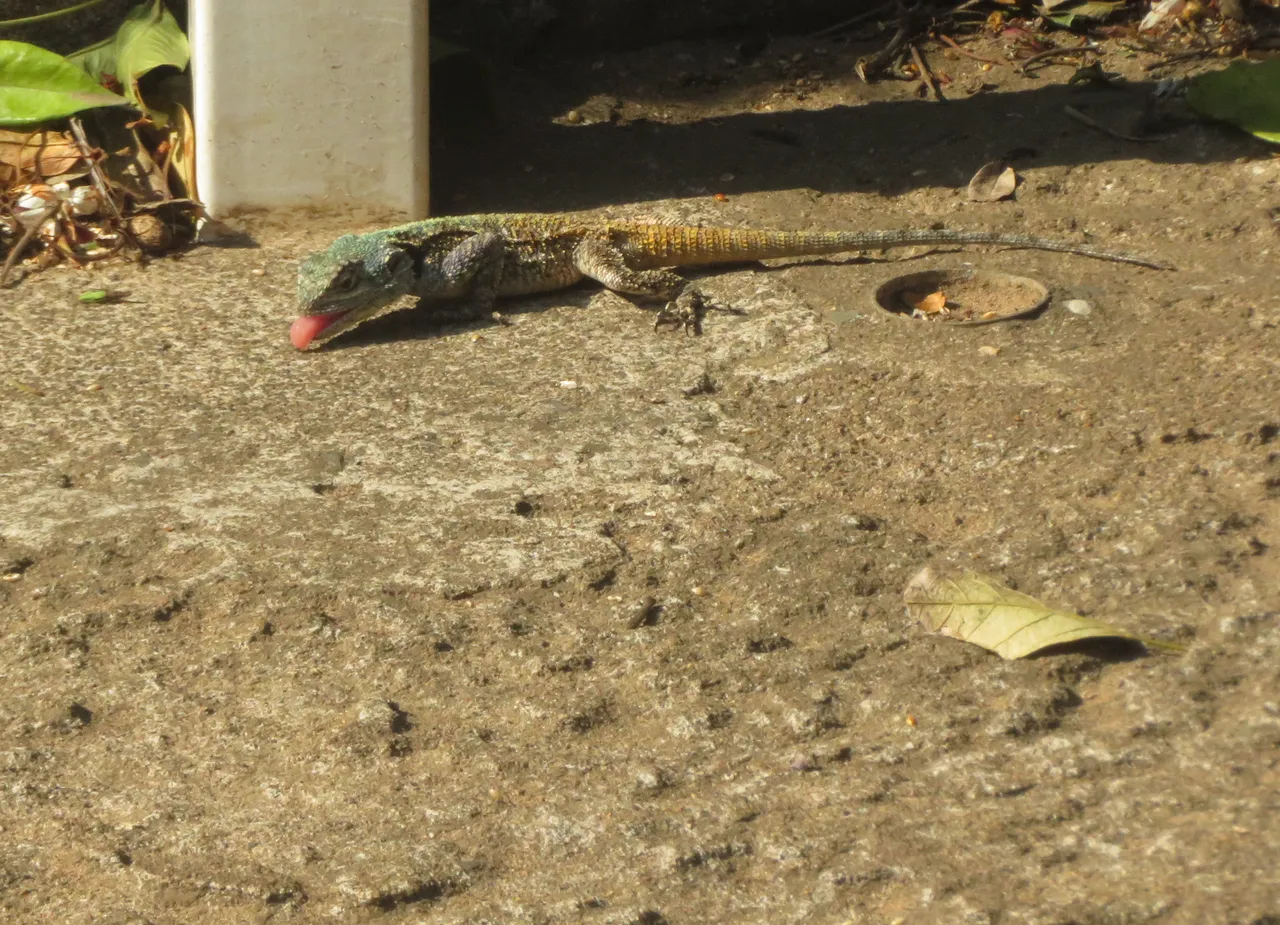
Vital Statistics Kruger Park
Name: Southern Tree Agama, Black-necked Agama or Blue-throated Agama [Acanthocercus atricollis]
Class: Reptilia
Order: Squamata
Family: Agamidae
Subspecies: There are possibly up to 6 races, but all poorly defined
Length_F: 135 mm
Length_M: 167 mm
Description
A very large agama with a broad head. Breeding males have a dull blue to bluish back, with bright blue (anteriorly) to straw-yellow (posteriorly) spines and a bright cobalt-blue head.
Distribution
Ethiopia, through Eastern Africa to the North-Eastern parts of the subcontinent, reaching the southern limits in coastal Kwa-Zulu Natal, Eastern Botswana (Lobatsi) and Ovamboland.
Breeding
The female lays 5 - 14 oval, soft-shelled eggs in a hole dug in moist soil. These hatch after 90 days.
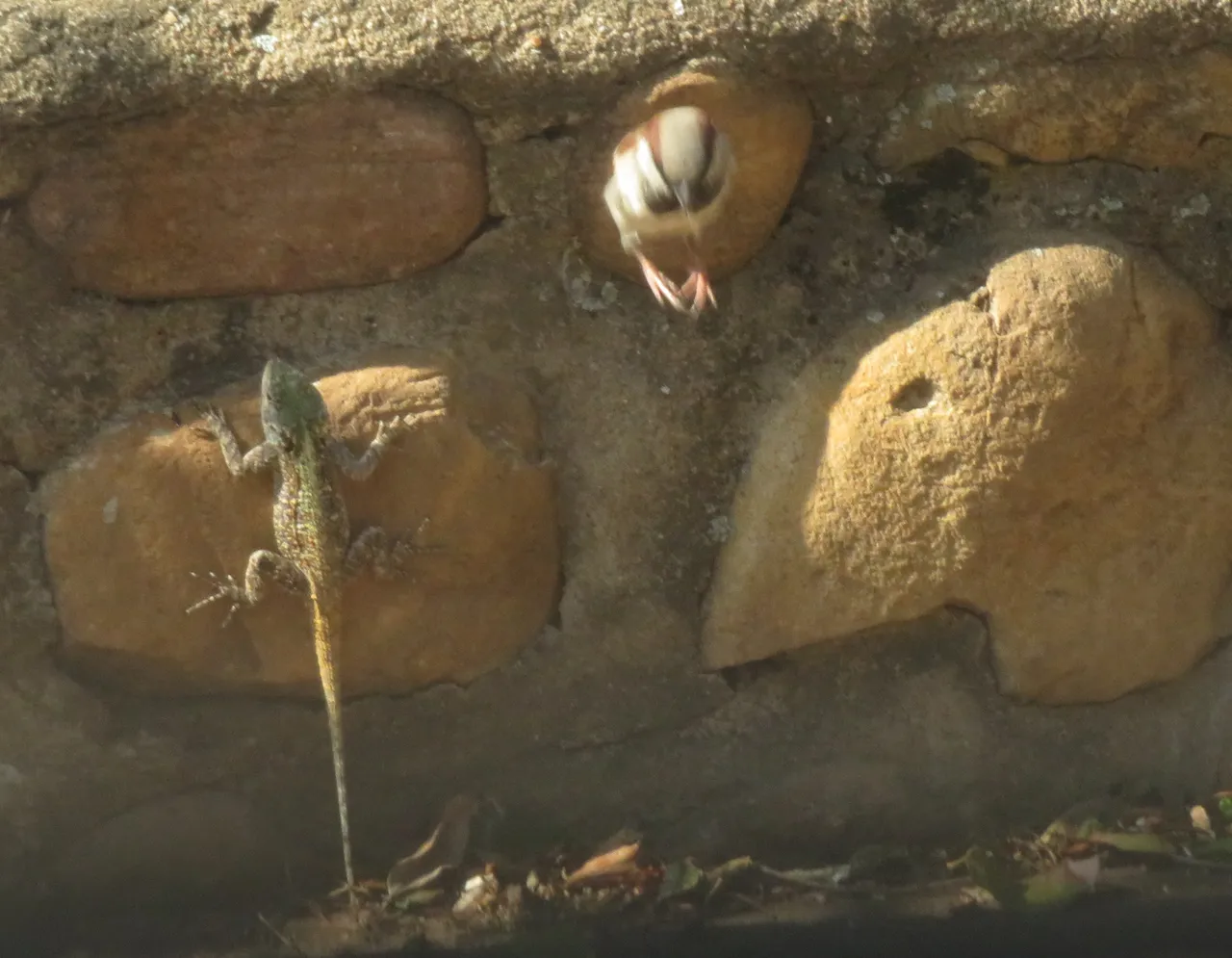
Previously posted more detail about the name in Afrikaans a step back in time... Bloukop Koggelmander

Entry for #amazingnature August contest Number 3 with @adalger
All photography is my own, any queries or requests please drop a comment below, have a wonderful day! Photography without tripod go with the flow wherever life takes you.
Thought for Today: "A grasshopper that sleeps about will be soon awake in a lizard's mouth." - African Proverb
Places to Enjoy On Hive: #powerhousecreatives hive-114105, #qurator hive-102880, #featheredfriends @melinda010100 in hive-106444, #wednesdaywalk @tattoodjay in hive-155530, #amazingnature @adalger in hive-127788, #alwaysaflower @dswigle in hive-154065, #feelgood community @barbara-orenya in hive-190931
!pinmapple -30.0836005 lat 30.8678566 long Sapphire Coast South Africa D3SCR




